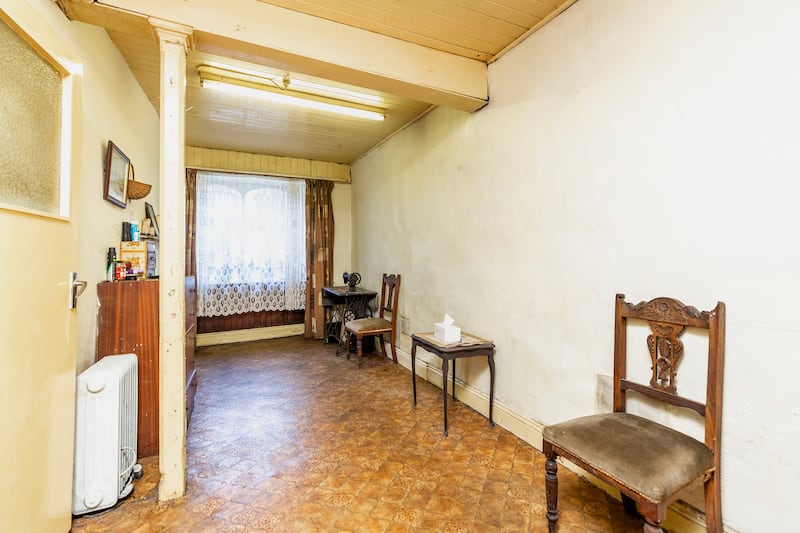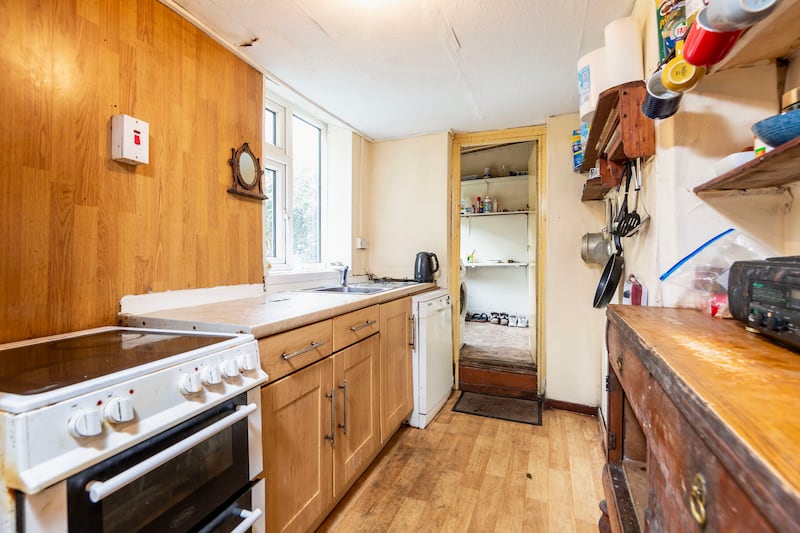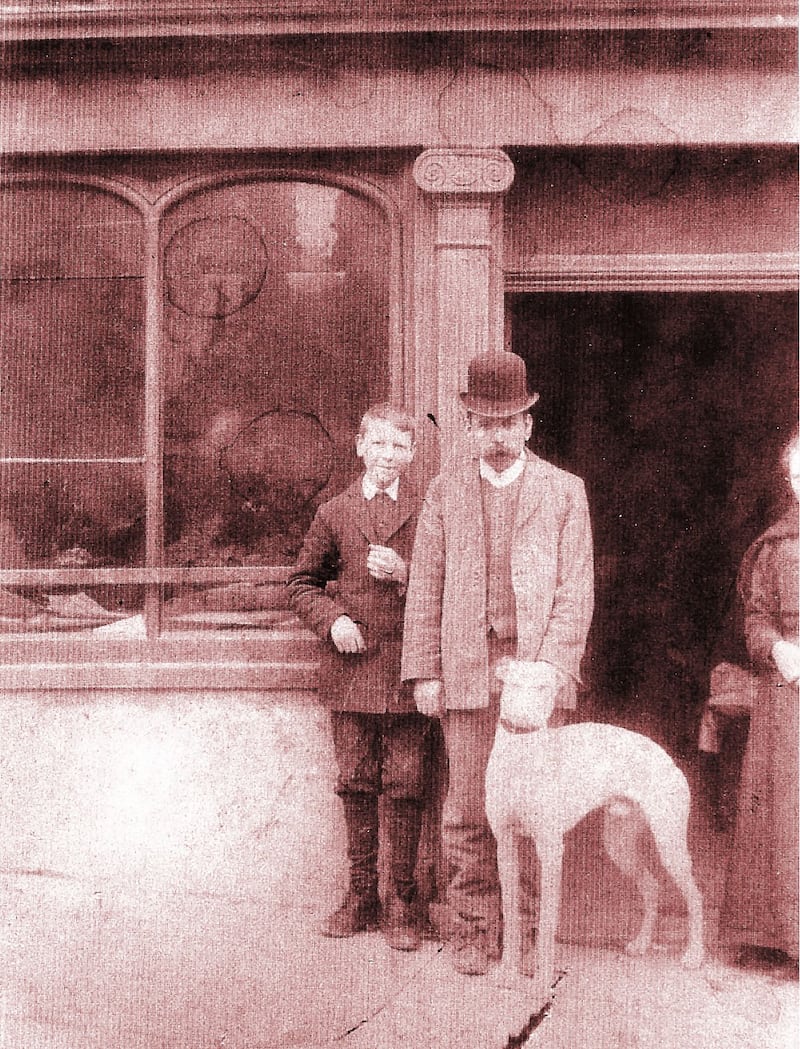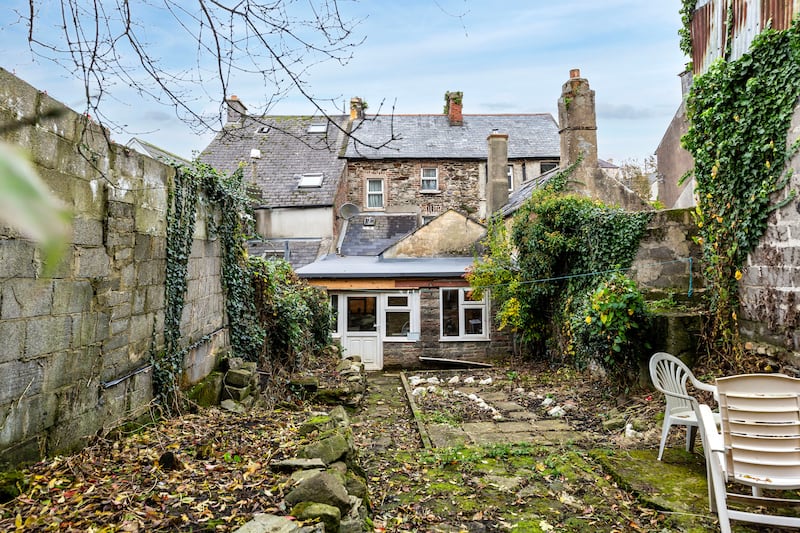A townhouse with a shopfront that featured in Small Things Like These, the 2024 film adapted by Enda Walsh from Claire Keegan’s 2021 novel of the same name, has come to market in New Ross, Co Wexford.
Number 21, perched halfway up one of the market town’s steep hills on Mary Street is a modest two-bay, three-story Georgian townhouse that underplays its potential, in the same understated way the protagonist Bill Furlong does in the movie, the role so quietly inhabited by Cillian Murphy.
The setting of the film had to evoke the book. “It had to be New Ross or somewhere like it,” says Paki Smith, the movie’s production designer. Number 21 was one of the first places Smith and location manager Colm Nolan viewed when they went to scope out filming locations in the town. The townhouse, which is a protected structure, was built in 1825 and was renovated to add a retail unit about a century later.


Situated opposite the dark lane on which the Furlong family lives in the film, the vista in real life is as steep as it appears, which was a dream, Smith says, as he wanted the audience “to feel those ups and downs”.
RM Block
Number 21 Mary Street appears small from the outside, although it extends to a sizeable 141sq m (1,517sq ft). Its early-20th-century storefront features in the background of shots of Furlong in the misty rain, tramping up the lane to his home.
For those keen to take on a deep renovation project, there are a lot of features to love. The exterior has square-headed window openings, cut-stone sills and carved Ionic pilasters that flank the fixed-pane windows where a mullion rises to create an elliptical break in the glazing, and there remains hanging display iron.


The exterior was all that featured in the film. Smith didn’t need to look inside, but his curiosity got the better of him and he knocked on the door and was shown around.
Smith was charmed by the planes of the shop, its original features and its nooks and crannies. “To me it is a rare thing,” he says. “You can still tell it was a tailor’s house. I photographed it for future film sets.” Its quirky shapes, its original rooms, it had an atmosphere, Smith says. “It is rare to get this kind of character.”

The owner, Paul Walsh, whose family name is over the door, is the youngest of 10 children and has lived at number 21 almost all his life. He was born in the house and recalls the front door always being open. When his father was the tailor, it led straight into the shop. Customers, from wealthy farmers to those looking for Communion or Confirmation suits, sat on a long bench to wait.
“There were bolts of fabric on the shelves and the room was filled by a huge big table that my father sat at like a yoga master, his legs crossed. My mother did the alterations,” says Walsh. A cubicle to the rear was where the women changed. As a child, Walsh often dropped altered garments back to the shops.
A photo from the early 20th century depicts Paul’s grandfather, John, standing proudly outside the shop flanked by his eldest son, Pierce, Paul’s uncle, with a greyhound. “He was crazy about greyhounds,” says Paul, recalling that he raced them at Harold’s Cross in Dublin and White City in London. The shot featured in New Ross Remembers, a 2010 publication authored by local historian Seán Crowley.
The final scenes of the film were shot from the shop. It was raining and Walsh invited the crew into the house to shelter.
In an era of clutter-free spaces and icing-sugar walls bathed in tasteful neutrals, number 21 offers an imaginative house-hunter the chance to buy a property with a history and the potential to extend, for it comes to market with a large south-facing back garden that backs on to Library Park, a large public green space. It has an E1 Ber, which a new owner would probably look to improve.
The house has four bedrooms, two on the first floor and two on the second. There is a dining area to the rear of the sittingroom that adjoins a scullery-style kitchen with a back hall opening out to the garden.
Above this part of the house is a pitched space that, subject to planning permission, could form part of the kitchen below to give it a better ceiling height and to repeat the different ceiling planes of the sittingroom.

Smith would not be interested in changing the existing layout if he were to buy it himself. “If it was me, I would take time to preserve it the way someone would preserve a French or Italian country house, bringing modernity into it in a way that is very sympathetic,” he says.
The four-bedroom property is on the market seeking €149,000 through Sherry FitzGerald Radford.





















